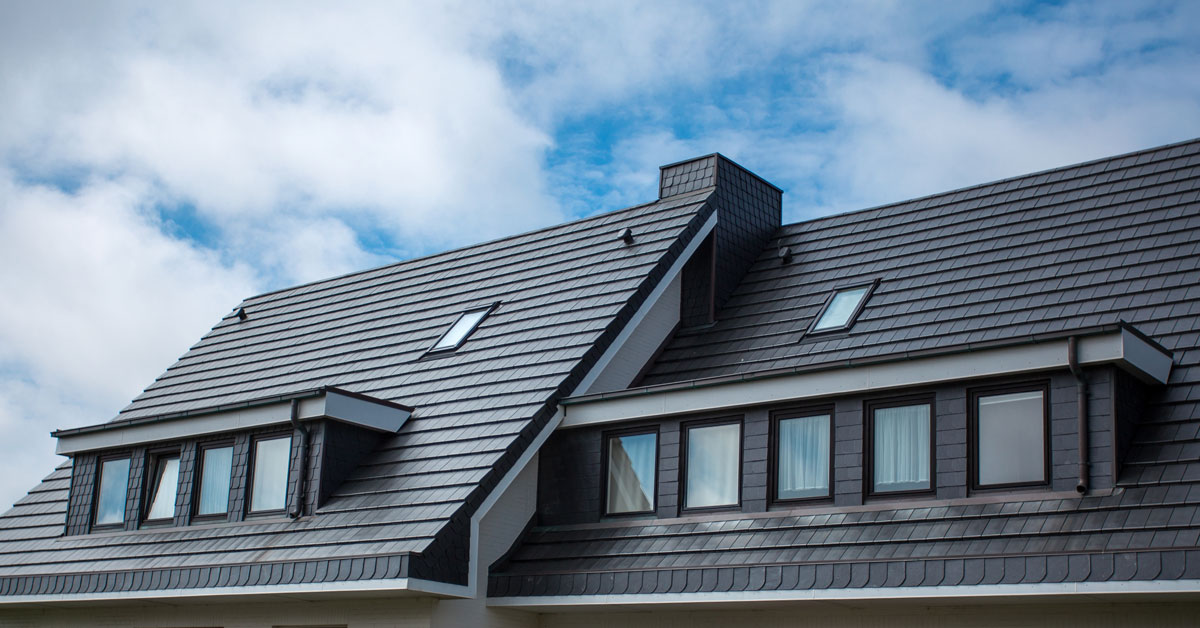Necessary Inquiries to Ask Gainesville Roofing Companies Prior To Working With
Necessary Inquiries to Ask Gainesville Roofing Companies Prior To Working With
Blog Article
Finest Practices for Ensuring Proper Roof Covering Air Flow
Making certain appropriate roof air flow is vital for the durability and effectiveness of a roof. A balanced intake and exhaust air vent proportion, frequently 1:300, plays an essential duty, with consumption vents preferably placed at the reduced edge of the roofing system for awesome air access and exhaust vents at the height for cozy air exit. Normal evaluations to determine clogs and preserve clear air movement are vital. Additionally, maintaining insulation away from vents is vital to avoid air movement limitation. Recognizing these foundational components sets the phase for more detailed understandings into setup and maintenance practices that can considerably boost your roof's efficiency.
Understand Ventilation Essentials
Properly understanding air flow fundamentals is essential for guaranteeing the durability and performance of roofing systems. Effective air flow mitigates wetness build-up and temperature level extremes in the attic room, both of which can lead to substantial architectural damage in time. A well-ventilated roof aids in protecting against usual concerns such as mold and mildew development, wood rot, and ice dams, which can jeopardize the honesty of the roof covering materials and the underlying frameworks.
The key goal of ventilation is to promote the activity of air, permitting a consistent exchange between the outside and interior environments. This balance is accomplished via a mix of consumption and exhaust vents that function together to keep optimum air movement. Consumption vents, generally situated along the soffits or eaves, allow fresh air to get in the attic room area, while exhaust vents, often located at or near the roofing ridge, make it possible for hot, humid air to escape.
Secret aspects influencing the efficiency of roofing air flow include correct positioning, appropriate sizing, and making sure that both intake and exhaust vents are unobstructed. Normal assessment and upkeep are important to recognize possible clogs, damage, or inefficiencies in the ventilation system, therefore securing the roof's efficiency and durability.
Sorts Of Roof Vents
Roof vents play a critical duty in keeping reliable attic air flow and, by extension, the general health and wellness of the roofing system. Different kinds of roofing vents are offered, each with special advantages customized to particular roof demands.

Soffit vents are installed under the eaves and work in tandem with roofing vents to guarantee a well balanced intake and exhaust system. By permitting cooler air to go into from below, soffit vents help with the expulsion of hot air via upper vents. Gable vents, located on the outside wall surfaces of the attic room, deal another effective service, particularly in homes with gable roof coverings.
Analyze Your Present Air Flow

Following, think about the age and condition of your roof materials and ventilation components. Older systems might not follow current building codes or might have weakened in time, decreasing their efficiency. Conduct a thorough assessment to recognize any indicators of wear and tear, such as rust, damages, or spaces that can endanger the system's performance.
In addition, determine the attic temperature level and humidity degrees. Heats and humidity can suggest insufficient ventilation - gainesville roofing companies. Make use of a hygrometer and thermostat to acquire exact readings, comparing them with outdoor problems. Relentless discrepancies recommend potential problems that require attending to.
Setup Best Practices
Reliable installment of roof ventilation systems is critical for guaranteeing ideal performance and longevity. Proper installment begins with understanding the details ventilation requirements of the roof and he has a good point the structure it covers. This involves determining the right proportion of consumption to wear down vents, usually adhering to the 1:300 guideline, which states one square foot of ventilation for every 300 square feet of attic floor space.

The positioning of vents is similarly crucial. Consumption vents should be installed at the roof covering's lower side, frequently in the soffits, to allow trendy air to enter. Exhaust vents, on the various other hand, ought to be mounted near or at the roofing system's top to assist in the leave of warm, damp air. This develops a natural air flow that assists maintain temperature and dampness equilibrium within the attic room.
Seal all air vent links thoroughly to stop air leaks and possible water seepage. Use high-quality materials and comply with maker guidelines to make sure toughness and effectiveness. In addition, incorporating ridge vents with baffles can dramatically boost airflow effectiveness by avoiding wind-driven rain and snow from getting in the attic room.
Eventually, exact installment of roof covering air flow systems mitigates potential problems such as mold and mildew development, ice dams, and architectural damages, guaranteeing the roofing's honesty and the structure's general health.
Routine Maintenance Tips
Consistency in upkeep practices is basic to making sure the long-lasting efficiency of roof covering ventilation systems. Throughout these assessments, ensure that vents are cost-free of debris, nests, and various other blockages that might impede air flow.
Cleaning the vents is an additional vital job. Utilize a soft brush or a vacuum cleaner to get rid of dust and particles from intake and exhaust vents. Be mindful not to damage the air vent screens or louvers during the procedure. In addition, examine the attic room area for any kind of signs of water damage, which could endanger the stability of the roof.
Appropriate insulation is just as vital. Guarantee that attic insulation does not obstruct the vents, as this can severely restrict air movement. Reposition or view it change it to keep an effective obstacle. if any type of insulation has moved or resolved.
Last but not least, replace any damaged or missing out on elements without delay. Busted vents, split roof shingles, or tatty blinking can all add to insufficient air flow and needs to be addressed without hold-up. Routine maintenance makes sure that the roof air flow system functions efficiently, consequently prolonging the lifespan of the roof itself.
Verdict
Guaranteeing appropriate roof covering ventilation is extremely important for preserving the effectiveness and resilience of a roof covering system. Adherence to the 1:300 consumption and exhaust air vent proportion, combined with the critical placement of vents, is check these guys out vital.
A balanced intake and exhaust air vent ratio, frequently 1:300, plays a pivotal function, with consumption vents ideally positioned at the lower edge of the roofing system for great air entry and exhaust vents at the height for cozy air leave. Consumption vents, typically located along the soffits or eaves, permit fresh air to enter the attic room room, while exhaust vents, frequently located at or near the roofing system ridge, make it possible for warm, moist air to run away.
Soffit vents are set up under the eaves and job in tandem with roof vents to ensure a balanced consumption and exhaust system. By allowing cooler air to get in from below, soffit vents help with the expulsion of hot air with top vents. Adherence to the 1:300 consumption and exhaust vent ratio, coupled with the tactical placement of vents, is crucial.
Report this page